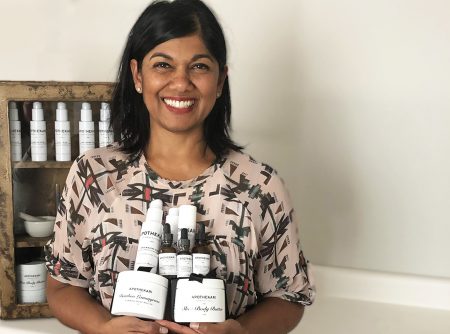When it comes to sunscreens and sun protection, is SPF 50 enough? Despite the growing awareness regarding the sun and the damage it can cause to skin both short and long-term, there is still a lot of confusion regarding the sun and sun protection. In this post, I’ll discuss SPF (Sun Protection Factor), what is right for you and your family and whether SPF 50 is enough.
When it comes to skin damage from the sun, the sun releases two types of rays that are problematic:
1. UVA Rays
Associated with Aging, these long penetrating ultraviolet rays can pass through windows and clouds and are prevalent year round. UVA rays can cause extensive skin damage, leading to premature aging (loss of skin elasticity and tone, wrinkles and fine lines, dark spots) and put individuals at higher risk of developing skin cancer.
2. UVB Rays
Associated with Burning, these shorter rays are around primarily in the summer and increase with sunshine intensity. UVB rays can stimulate melanin production (tanning AND age spots) and are helpful for synthesizing vitamin D.
SPF is a measurement of the amount of UVB protection afforded by a sunscreen, so it can help you to determine how long you can spend in the sun before getting a sunburn. For example, if you normally start to burn after 10 minutes of sun exposure, an SPF 15 sunscreen will protect you for 15 times that amount of time (15 x 10 = 150 minutes). An SPF 30 will protect you for 30 times that amount of time (30 x 10 = 300 minutes). Reapplying does NOT extend the protection time.
What SPF doesn’t tell you, is how much UVA protection you are getting. There still isn’t a universally recognized method of defining UVA protection, but both Health Canada and the FDA recognize the term ‘broad spectrum protection’, which manufacturers may use to describe sunscreens that deliver both UVA and UVB protection.
Is SPF 50 Enough?
When it comes to SPF, how high should you go? SPF 30 sunscreens block approximately 97% of UVB rays while SPF 60 formulations block close to 99%. No sunscreen can block 100% of UV rays, regardless of its SPF rating. For that reason, the term sunblock is misleading and cannot be used to describe a sunscreen. Despite this, you may have come across sunscreens with SPF ratings of 100.
However, there is little proof that a sunscreen can protect by that much so most countries limit the sunscreen SPF rating to a maximum of SPF 50+ or SPF 60. If you think that you can just dab some sunscreen on and head out the door, take heed.
SPF is very much dependent on how liberally you apply your sunscreen. A recent study showed that most of us don’t apply enough sunscreen to protect us as much as the label on the bottle indicates. In fact, the study showed that the majority of sunscreen users only apply between 20 and 50% of the amount that delivered the SPF rating in a lab.
That means if you’re wearing a sunscreen with an SPF of 30, you may only be getting protection of between SPF 6 and 15. An SPF of 60 applied incorrectly will only deliver protection of between 12 and 30. It’s important to apply enough.
How Much to Apply?
Experts tells us to aim for one ounce of sunscreen (the size of a shot glass) when applying over your entire body to get the full SPF protection stated. For the face, about 1/4 teaspoon should provide adequate coverage. It’s better to put on more than less, but if you find you can’t quite do the full 1/4 teaspoon, apply what you normally would, wait a few minutes and then reapply. That way, you get spots you may have missed the first time around.
When it comes to sunscreens, most skin care professionals recommend a minimum SPF 30, found in Shade SPF 30, our mineral based, broad spectrum, zinc oxide sunscreen. SPF 50 is certainly enough — just as long as you choose a broad spectrum formulation, apply enough and reapply as needed.
Our sister store PhaMix.com stocks a wide range of UVA/UVB blocking SPF 50+ sunscreens.







